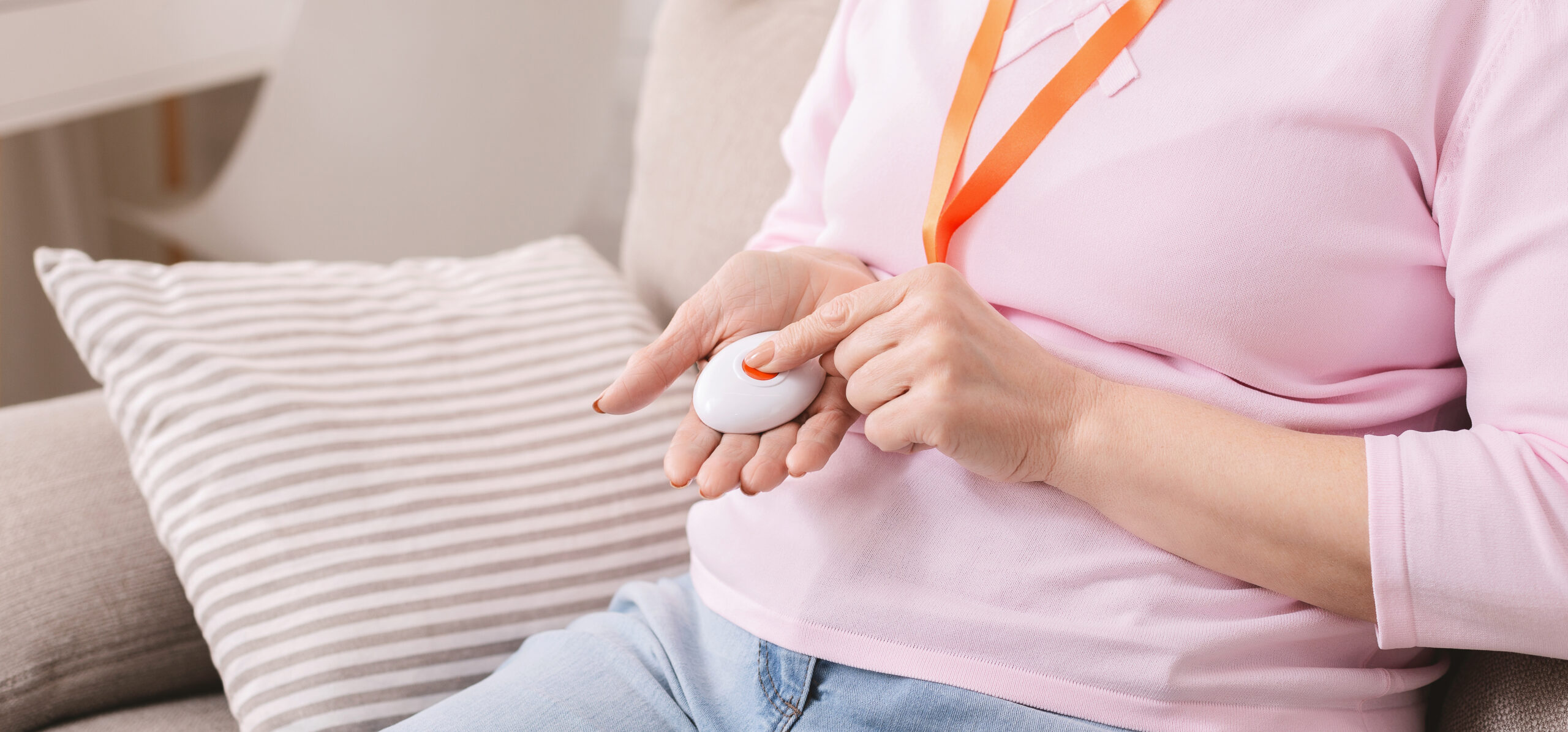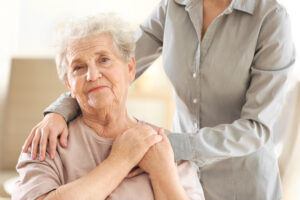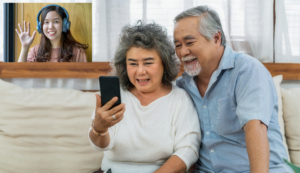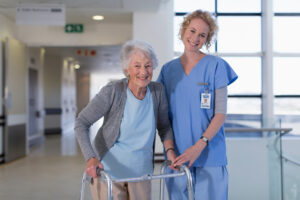Our homes are meant to be a sanctuary, a place where we feel secure and at ease. Yet, for many, home safety can be a challenge. Especially those living with mobility challenges or aging in place, the home can sometimes present safety risks. A minor hazard can lead to a fall or injury, impacting not just physical health but independence as well. The good news? Making your home safer doesn’t have to be a long or expensive process. With a few easy DIY fixes, you can create a space that fosters safety while supporting your independence or that of your loved ones.
Here are three simple adjustments you can make today to reduce fall risks and build a safer living environment. For a comprehensive checklist and more tips, you can grab our Free Home Safety Checklist HERE.
1. Declutter and Remove Trip Hazards
One of the easiest ways to make your home safer is to take a close look at your floors. Everyday items like loose rugs, electrical cords, and even piles of shoes or magazines can become tripping hazards if left unchecked. A quick decluttering session can significantly reduce the risk of a fall.
Actionable Tips:
- Rugs: Secure loose rugs with double-sided tape or non-slip rug pads or consider removing them altogether if they’re unnecessary.
- Cords: Use cable organizers or clips to keep electrical cords neat and tucked away along walls.
- Pathways: Walk through your home and identify any cluttered areas. Clear out hallways, stairs, and high-traffic zones to ensure smooth, uninhibited paths.
By removing these hazards, you’re not just improving safety but also creating a more organized and relaxing space.
2. Improve Lighting for Better Visibility
Dim or uneven lighting can make it harder to see potential hazards, especially for those with vision difficulties. Poor visibility can increase the risk of stumbling over obstacles or missing steps on staircases. Well-lit rooms and walkways go a long way in promoting a safer home.
Actionable Tips:
- Upgrade Bulbs: Install brighter, energy-efficient LED bulbs in heavily used areas like kitchens, bathrooms, and hallways. They’re cost-effective and long-lasting.
- Nightlights: Add nightlights in bedrooms, bathrooms, and hallways to make nighttime navigation easier, especially for trips to the bathroom.
- Motion Sensors: Install motion-sensor lights in entryways or along stairs. These automatically light up when movement is detected, which is especially helpful if you’re carrying items and can’t quickly reach a switch.
Good lighting doesn’t just help prevent falls; it brings peace of mind, knowing you won’t miss a step or stumble in the dark.
3. Install Supportive Safety Aids
Simple additions like grab bars, railings, or non-slip surface covers can make a tremendous difference in home safety. These aids are especially important in slippery or high-risk areas like bathrooms and stairways.
Actionable Tips:
- Grab Bars: Install grab bars near toilets and in showers or tubs. Opt for ones with a smooth but firm grip, and ensure they’re securely anchored into wall studs.
- Non-Slip Mats: Place non-slip mats in the bathroom and kitchen or anywhere floors might get wet. These provide extra traction and help prevent slipping.
- Railings: Check that all stair railings are secure and sturdy. If there are places in your home where a railing could provide support but there isn’t one installed yet, consider adding it.
These aids might seem small, but the confidence they provide is invaluable.
Be careful that what sounds like it might be a good idea really might not. I had that example with my mom. She complained to a couple of my siblings that it was hard for her to get up off the toilet. My sisters (one is a nurse practitioner) took it upon themselves to get mom a raised over the toilet chair with armrests.
It was easier for her to get off the toilet BUT with one bigger concern. The arms of the chair prevented her from being able to reach her bottom to wipe! It wasn’t working and she didn’t like it.
She had to stand up, pick the chair off the toilet, move it away, sit back down and then wipe! It really defeated the purpose. Now I was worried about her falling while moving the chair!
I am a long-distance daughter so a month or so after she was using it. I took a look at it and knew all she needed was a raised toilet seat. In other words, a thicker, taller toilet seat. My hubby replaced it and now she can get off the toilet after being able to reach and wipe! Mission accomplished. The problem became we were not stuck with a toilet chair that we couldn’t use. It didn’t come with a “bucket” so we can’t even save it as a commode (portable toilet). All we have now is a plastic armchair with a hole in the middle!

Building a Foundation for Independence
Safety at home is about more than just avoiding accidents. It’s about creating an environment where you or your loved ones feel secure and empowered to move freely and live fully. These easy fixes can be tackled in an afternoon, yet their impact will be felt every day.
Start with one area of your home and take it step-by-step. Maybe you’ll begin by tidying up those cords under the coffee table or swapping out an old bulb for a brighter one. Whatever changes you make, know that these small steps lead to big results.
Have your own DIY home safety tips? Share them in the comments below—we’d love to hear how you’ve made your living space safer. Remember, a safer home is a foundation for greater independence, and the knowledge that you’ve created a secure space for yourself, or your loved ones is priceless.
Thank you for spending time with us this week. We’re so glad to be part of your journey in caring for your aging loved ones. It’s an honor to share resources, insights, and a little encouragement to support you along the way. We look forward to bringing you more helpful tools and compassionate guidance in the weeks ahead. See you back here soon!
With care,
Pam and Linda
Your Nurse Advocats
“Compassionate Care for Aging Adults Along with Peace of Mind for the Family”
Resources
Preventing Falls at Home National Institute on Aging
Free Resources: Your Nurse Advocate Consulting.
Blog Post: Aging in Place: How to Modify Your Home for a Safe, Comfortable and Happy Home
About the Authors
At Your Nurse Advocate Consulting, Pam and Linda’s mission is to empower aging adults and their families to take control of their health, prepare for life’s uncertainties, and secure their peace of mind. We are dedicated to providing compassionate guidance, personalized support, and expert resources to help our clients navigate complex medical needs and organize their personal affairs.
As independent patient advocates, we have a steadfast commitment to clarity, family well-being, and empowerment, we strive to make a meaningful impact by ensuring our clients feel confident, prepared, and cared for every step of the way on their healthcare journey.
Expert Guidance You Can Trust
With over 80 combined years of R.N. experience navigating the complex healthcare system, we stand as trusted guides for seniors and their families. Our expertise ensures they can access the care and resources they need without feeling overwhelmed by red tape or confusion.





